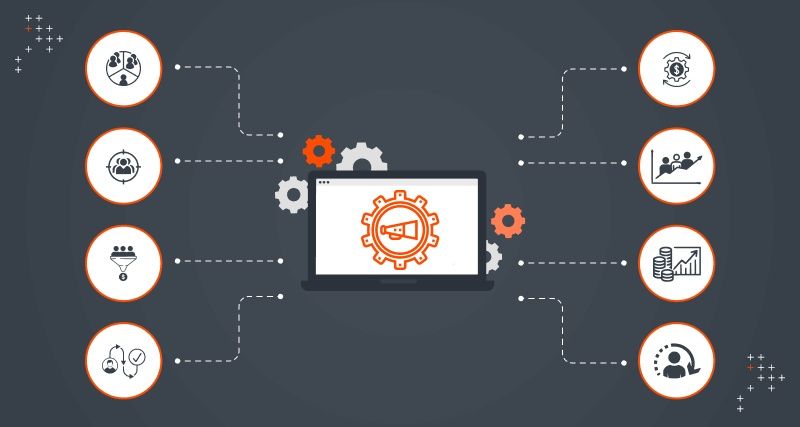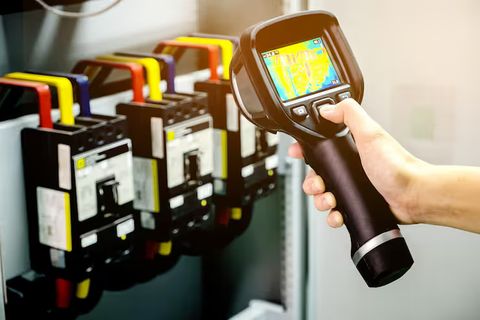Explore Marketing Automation Tools: A Complete Guide with Key Insights and Tips
Marketing automation refers to the use of technology to manage, streamline, and measure marketing tasks and workflows automatically. It exists to simplify complex marketing processes such as email campaigns, customer segmentation, social media management, and lead nurturing.
The concept became mainstream in the early 2000s as digital marketing evolved and businesses started generating massive amounts of customer data. Instead of managing individual tasks manually, marketers began using automation tools to improve accuracy, save time, and enhance personalization.
Today, these platforms integrate artificial intelligence (AI), machine learning, and analytics to provide data-driven insights. Whether you’re managing small-scale email campaigns or large omnichannel strategies, marketing automation allows you to maintain consistency and scalability.
Why Marketing Automation Matters Today
Automation plays a vital role in modern digital marketing strategies. As audiences become more segmented and engagement becomes harder to achieve, businesses require smart systems that can deliver personalized content efficiently.
Key benefits include:
-
Improved Efficiency: Repetitive tasks like follow-up emails and social media scheduling can be automated.
-
Enhanced Customer Experience: Automation allows personalized messages based on behavior and preferences.
-
Better Lead Management: It helps nurture leads through targeted campaigns until they are ready for conversion.
-
Accurate Analytics: Real-time insights help marketers measure campaign success and adjust strategies quickly.
The relevance of marketing automation has grown rapidly post-2020. The rise of remote work, digital-first businesses, and e-commerce platforms increased the demand for tools that save time while improving engagement.
According to a 2024 HubSpot report, companies using automation tools for email marketing saw a 34% higher engagement rate compared to manual campaigns.
Recent Developments and Trends
In the past year, marketing automation has seen significant innovations. From AI integrations to cross-channel personalization, new technologies are shaping how marketers interact with audiences.
Key 2024–2025 trends include:
| Trend | Description | Example Tools |
|---|---|---|
| AI-Powered Personalization | Algorithms predict user behavior for more relevant content. | HubSpot, Salesforce Marketing Cloud |
| Omnichannel Campaigns | Integration of social media, SMS, and email in a single workflow. | ActiveCampaign, Sendinblue |
| No-Code Automation | Simplifies workflow setup for non-technical marketers. | Zapier, Make (Integromat) |
| Predictive Analytics | Uses data forecasting for campaign optimization. | Adobe Marketo, Oracle Eloqua |
| Chatbot Integration | Combines automation with conversational marketing. | Drift, Intercom |
Another emerging trend is privacy-focused automation, driven by stricter data protection laws. Platforms now emphasize transparent consent mechanisms and data encryption to comply with global privacy standards.
Legal and Policy Considerations
Marketing automation is directly influenced by data privacy laws and digital marketing regulations. Marketers must ensure that all automated communications comply with these frameworks to avoid penalties and maintain trust.
Important regulations include:
-
GDPR (General Data Protection Regulation – EU): Requires user consent before collecting personal data and mandates secure handling of user information.
-
CCPA (California Consumer Privacy Act – USA): Gives users control over how their data is used in marketing activities.
-
CAN-SPAM Act (USA): Sets guidelines for email marketing automation, including unsubscribe options and sender identification.
-
India’s Digital Personal Data Protection Act (2023): Establishes transparency and accountability in automated communication and customer data handling.
Marketers using automation platforms should integrate compliance features like opt-in forms, consent tracking, and unsubscribe links in every automated message. Following these policies ensures responsible marketing practices while maintaining audience trust.
Tools and Resources for Marketing Automation
The market offers a wide range of automation platforms, each with unique capabilities. Below is an overview of leading tools, categorized by functionality.
1. All-in-One Marketing Platforms
-
HubSpot: Integrates email marketing, CRM, analytics, and workflows.
-
ActiveCampaign: Combines automation, CRM, and customer segmentation.
-
Salesforce Marketing Cloud: Offers enterprise-level automation with AI integration.
2. Email Automation Tools
-
Mailchimp: Suitable for small to mid-sized businesses for newsletters and audience segmentation.
-
Sendinblue (Brevo): Provides automation workflows, SMS marketing, and transactional messaging.
3. Social Media Automation
-
Buffer: Simplifies scheduling and performance tracking across platforms.
-
Hootsuite: Enables team collaboration and analytics for multi-channel campaigns.
4. Workflow and Integration Tools
-
Zapier: Connects various marketing apps for task automation without coding.
-
Make (Integromat): Automates workflows across different marketing platforms and CRMs.
5. Analytics and Optimization
-
Google Analytics 4: Provides automated reporting and conversion tracking.
-
Hotjar: Helps visualize customer behavior to optimize campaigns.
Helpful resources for continuous learning:
-
Google Digital Garage (Free certification courses)
-
HubSpot Academy (In-depth automation tutorials)
-
LinkedIn Learning (Professional courses on digital marketing tools)
Common Questions About Marketing Automation
1. What types of tasks can marketing automation handle?
It can automate repetitive marketing tasks such as sending emails, posting on social media, segmenting audiences, tracking leads, and analyzing campaign performance.
2. Are marketing automation tools suitable for small businesses?
Yes. Many platforms offer scalable features that adapt to smaller teams and budgets. Tools like Mailchimp and ActiveCampaign are particularly small-business friendly.
3. How does automation improve customer engagement?
By analyzing user data, automation tools can send timely and relevant messages, improving response rates and customer satisfaction.
4. Is it difficult to set up automation workflows?
Modern tools provide drag-and-drop interfaces and pre-built templates, making setup easy even for users with limited technical skills.
5. What are common mistakes to avoid?
Over-automation without personalization, lack of data hygiene, and ignoring performance metrics can reduce the effectiveness of campaigns.
Conclusion
Marketing automation has transformed how businesses connect with audiences. It bridges the gap between marketing efficiency and personalization, allowing campaigns to operate smoothly across multiple channels.
With AI-driven insights, predictive analytics, and compliance-friendly workflows, automation tools help marketers focus on creativity and strategy rather than repetitive tasks.
As digital marketing continues to evolve, adopting the right marketing automation tool can lead to smarter decision-making, stronger relationships with customers, and sustained business growth.
Whether you’re a beginner exploring automation basics or a professional seeking optimization strategies, understanding these tools provides a foundation for effective, data-informed marketing in today’s digital world.






